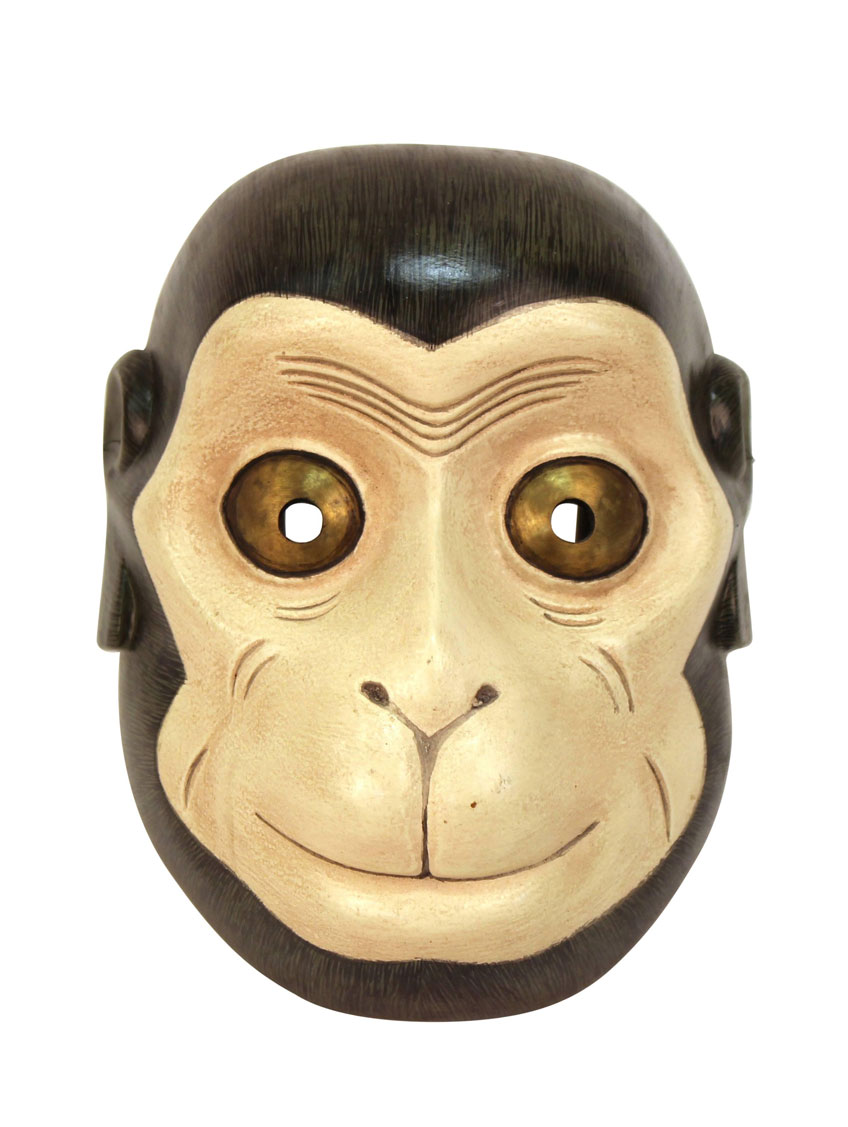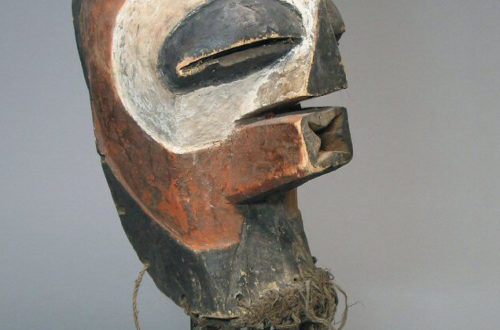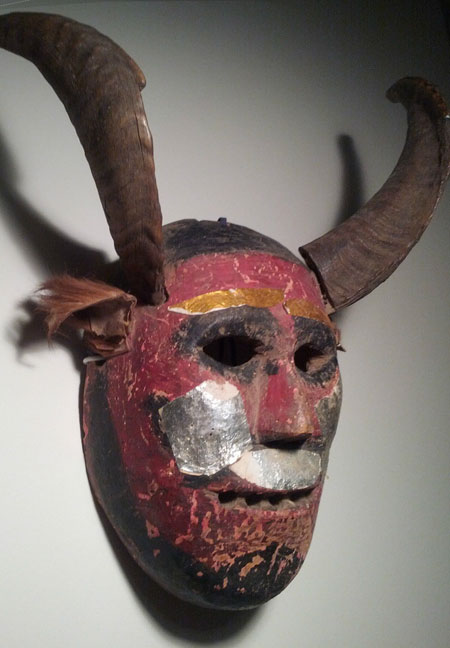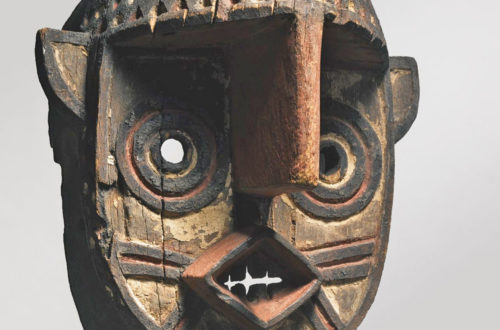 This famous monkey mask, often called Saru from the Noh theater, was made during the Showa period between 1926-1989. Even though it looks brand new, it’s probably 50 years old. The following maybe more than you want to know…
This famous monkey mask, often called Saru from the Noh theater, was made during the Showa period between 1926-1989. Even though it looks brand new, it’s probably 50 years old. The following maybe more than you want to know…
A collective name for Noh and kyōgen used until the start of the Meiji era. Sarugaku derives from sangaku, which came to Japan from the Tang Dynasty during the Nara era and was combined with ancient Japanese comedies. Sarugaku flourished during the Heian and Kamakura eras, and was at the time strongly comedic and broad based, including skits, acrobatics and magic. In the middle of the Kamakura era Sarugaku split into Noh, with a more serious dramatic nature, and kyōgen, with more comedic dialogue, and the two began to be collectively known as Sarugaku. After that, until the end of the Meiji era both Noh and kyōgen actors were called Sarugaku, but during the Meiji era when Noh began to receive the support of the nobility, the term saru (or “monkey”) fell out of favor, and the two began to be called nohgaku.
https://db2.the-noh.com/edic/2010/02/sarugaku.html A






One Comment
Levi Armstrong
My mom wants to start collecting photographs of various traditional Japanese Noh masks. It’s great that you mentioned that Noh was once part of Sarugako until it was split into two genres in the Kamakura era. I’ll share this information with my mom on our dinner date tomorrow. Thank you!